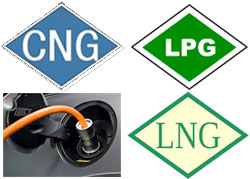Alternate Fuels |
Why CNG Station Performance Specifications Are Critical for Maintenance Technicians
by Annalloyd Thomason, Vice President/General Manager, NGVi
The information contained in performance specifications will become the basis of an effective Operation and Maintenance (O&M) program for any compressed natural gas (CNG) fueling station. Therefore it is essential that CNG fueling station maintenance technicians understand what performance levels are required of the equipment. These performance specifications should have been established when the station was designed.This article is also available in Adobe's PDF file format. To download or view the PDF, click here.
While stations vary widely and not all of the following may apply, here are seven areas of specifications to which the O&M technician must have access to effectively perform his or her job:
2. Gas quality – Gas quality is critical to ensure that vehicles fueling at the station perform optimally and are not damaged by failure of the fuel to meet specifications. Gas quality specifications may include those for lubrication oil content, water content, and odorant level. A sample gas quality specification for these elements might look like this:
5. Service requirements – Whether the CNG station is being maintained by in-house fleet operations personnel or a third party, a minimum specification for service expectations should be established and met. Some of the criteria might include:
This is particularly important during the start-up, warranty and/or extended service contract period. 6. Noise level – The noise emanating from a CNG fueling station can be a major issue within certain locations. For example, there are usually noise restrictions for stations near hospitals, schools and other similar institutions that are administered by local planning organizations or other permitting groups. CNG stations need a minimum specification for noise level to be measured in dba scale. For example, a station located near a hospital might have a noise level specification of less than 75 dba per compressor skid. 7. Liquid and vapor fugitive emissions – Properly working CNG stations should have no liquid (oil or other) or gas emissions except for the depressurization of the nozzle/receptacle connection when a vehicle is being fueled. In other words, nothing should be emitted into the environment from the station. The ideal specification would indicate that there are no liquid or vapor fugitive emissions coming from the station’s equipment. While this is not an exhaustive list of CNG fueling station specifications, they are some of the most important items that the CNG fueling station maintenance technician must have. To learn more about what CNG fueling station maintenance technicians must know, click here to email Lawrence McBride, NGVi® Customer Solutions Manager. You may also reach him for additional information by calling 800-510-6484, or 702-254-4180 x28. |
© 2005 - 2021 World Sweeper
|
Return to Alternate Fuels Home Page:
|